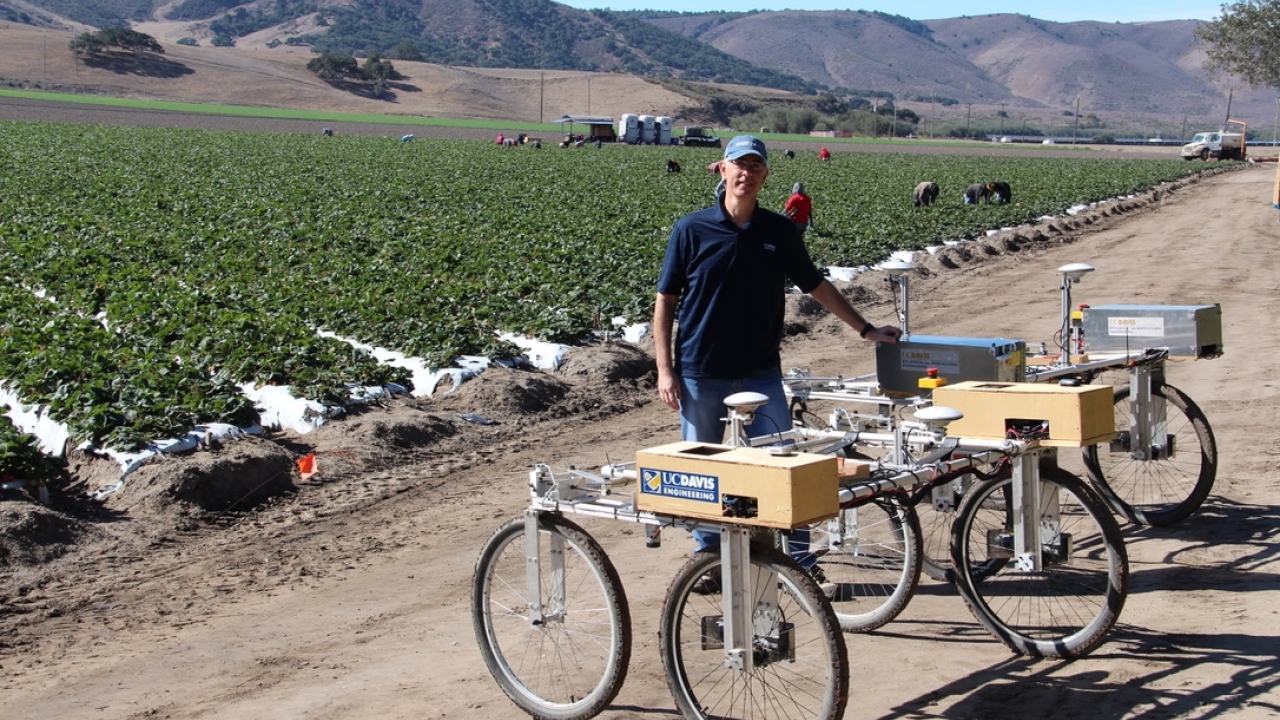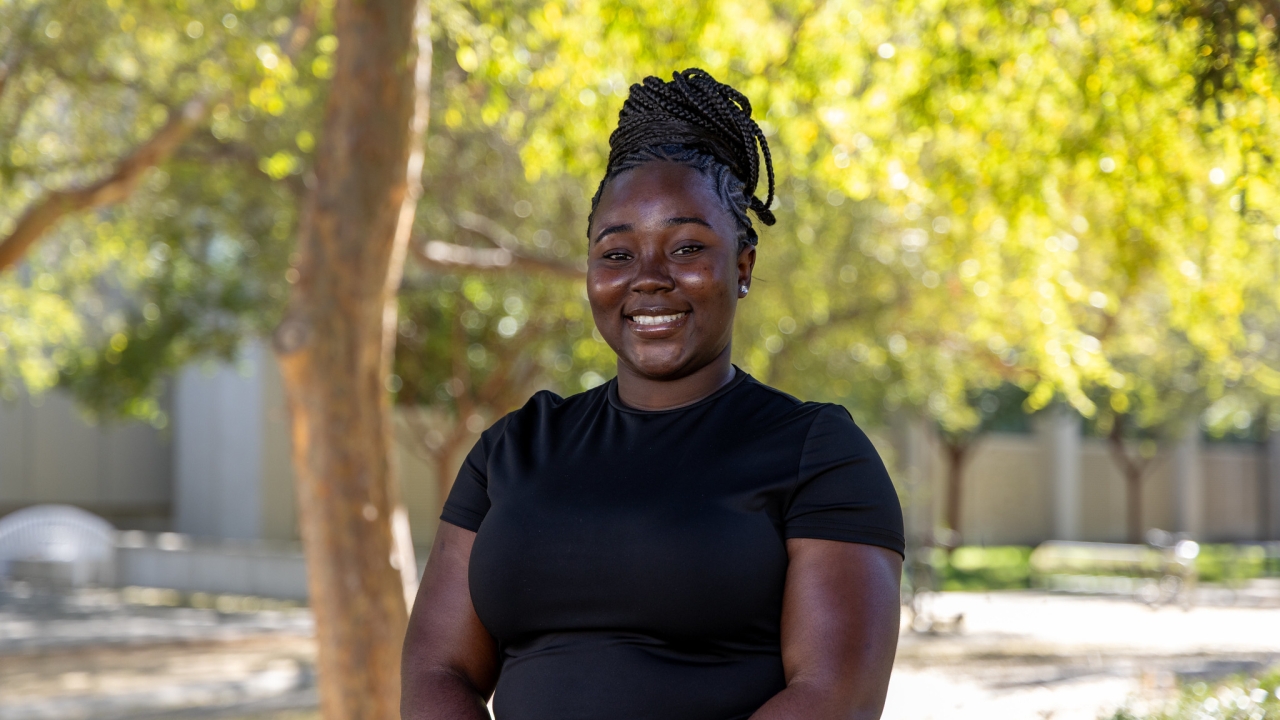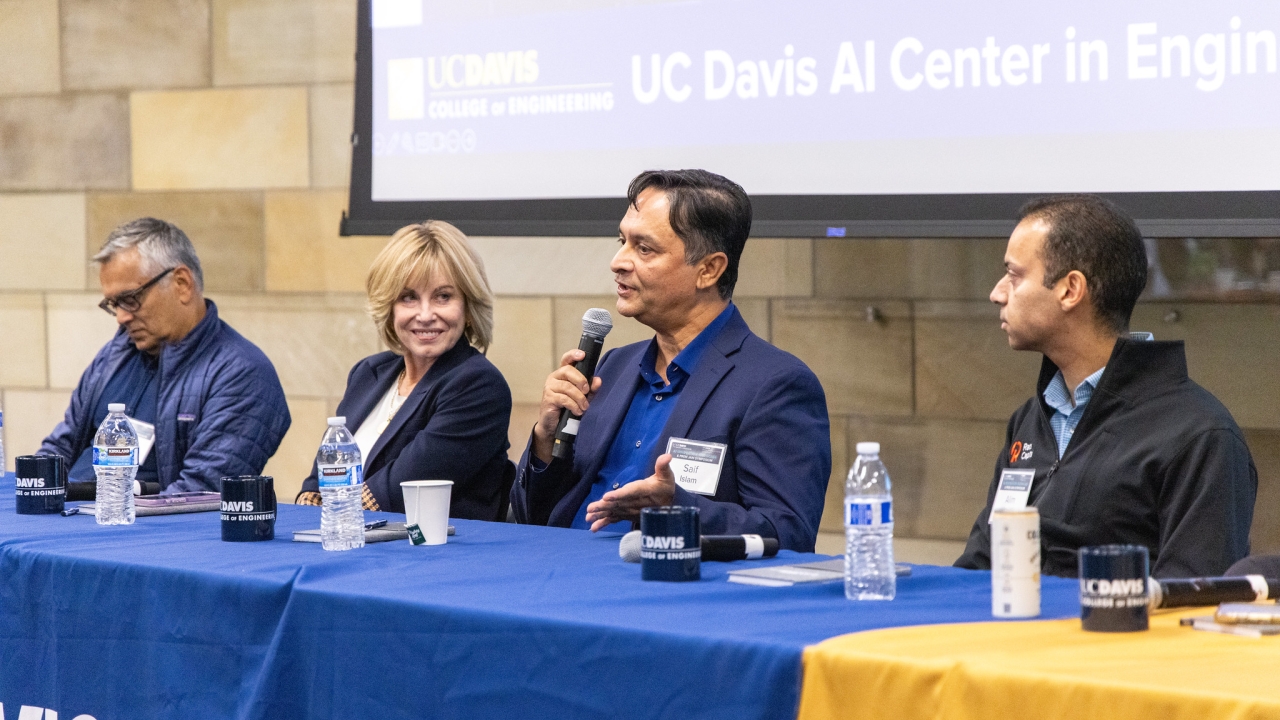
Stavros Vougioukas on the Next Generation of Farm Robotics
How UC Davis Research is Engineering Solutions for Harvesting Automation and Safety

As California's agricultural sector adopts automation to manage costs, labor shortages and production risks, researchers at UC Davis are partnering with them to develop solutions that can make a real difference in the field.
Earlier this year, California Farm Bureau's Ag Alert featured University of California, Davis, Professor of Biological and Agricultural Engineering Stavros Vougioukas in a story about how farm operations are adopting new technologies to stabilize their businesses. In a follow-up conversation this August, Vougioukas highlighted his team's research on creating robotic harvest aids designed to make agricultural work faster, safer and more efficient.
What kind of research do you do?
A big component is labor savings. Part of that deals with harvest aids — developing robotic technologies to help workers be more efficient and hopefully safer. I also work on robotic harvesting.
What is an example of a harvest aid or robot you developed?
We developed a robotic harvest aid for strawberries. It's similar to the Burro for grapes, but it's more autonomous. It communicates wirelessly with the workers, so they actually know where the workers are and can predict when a worker will need to transport trays of strawberries back and forth. That's a major source of inefficiency. So, if you harvest a tray, instead of walking or running to deliver it, the robot will deliver it for you.
What are the current limitations of robotic fruit harvesters?
One of the fundamental issues with harvesting robots is speed. If you have a robotic fruit-picking machine that costs a quarter-million dollars, and it's only as fast as one or two people, it's not cost-effective. The robot needs to not only work in principle, but be fast enough to compete with what we already have, which are very skilled human pickers.
Are there any obstacles other than speed that robotic harvesters face?
I would say the greatest challenge is occlusion by foliage. If the robot's cameras cannot see 30% of the fruit, it cannot harvest it because it doesn't know it's there. Think of a strawberry plant where the berries are hidden under the leaves. If you watch strawberry pickers and see how they pick, they don't only look with their eyes. They do what we call active vision, or active perception. They move around to multiple viewpoints, and they also use their hands to explore. They do that very quickly and efficiently. They don't miss anything. We have great cameras. We have arms and grippers. We have software that can detect images of fruit, but we haven't achieved that combination of exploration and visibility — and doing it quickly and delicately.
What ideas have researchers pursued to help robots find more fruit and pick it faster?
Researchers are exploring active vision in robots. How can we move the camera around to discover more fruit? Can we use multiple cameras? That's another problem to solve, because the data from each camera needs to be processed, so more cameras increases the computing power you need. Another approach is agitation of foliage, using airstreams or a mechanical device to move the leaves around and reveal fruit that was not visible. This has been tested sporadically, and the results are not conclusive. People have also explored other sensing modalities like ultrasonics, but we haven't seen anything promising. Pretty much everybody is working with visual data.
Are there specific crops researchers have focused on?
A lot of the work has been done on apples and strawberries because they are big markets.
If you take economics out of the picture, is there a robot that can pick apples and place them in a bin without damaging them?
Sure. Several research groups and startup companies have demonstrated that. There are different types. The more common arms look like human arms with joints. They slide in and out. A common approach for detaching apples from the tree is a suction cup that attaches to the surface of the apple. There's a vacuum, so you pull it away, maybe rotating at the same time. Another challenge is conveying the fruit into the bins. In one model, there is a vacuum tube wide enough so that the apples travel inside it and end up in the bin. That seems to be working OK, but there is still some damage. People have also tried little scissors that clip the stems.
What do you think is achievable within the next few years?
It's probably more than two or three years away, but hopefully, we will get to a point where robots can pick maybe half of a crop of apples, and humans will pick the rest. Of course, that changes the economics for workers, because they won't be as productive in an orchard where half the fruit is already harvested. They would need to be paid differently. I think we'll be dealing with those issues pretty soon.
To what extent do you think robots can or will replace farmworkers?
I don't think we will ever replace everybody, because people are not doing just one or two tasks. They're doing different things. Harvest aids might replace 15% to 25% of human farm labor, something along those lines, but it will be partial and gradual. It is tough to put numbers to it, but harvesting robots could replace up to 50% of labor, depending on what percentage of fruit the robots can pick. We're not going to have a technology that replaces all strawberry or apple or citrus pickers overnight.
What kinds of roles are farmers playing in helping researchers develop new harvest technologies?
They're playing a huge role. Farmers allow universities and startup companies to do experiments in their orchards. They give us feedback on what works and doesn't work. There is a lot of that happening. There are also grower-run commodity boards that fund research. We can't do this work without the growers.




